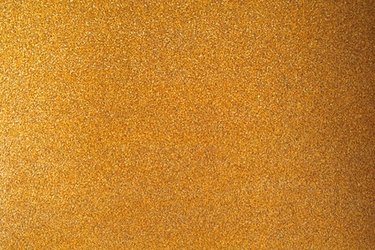Things You'll Need
Damaged plaster frame
Children's plastic clay
Plaster of Paris
Fine sandpaper
Artist's paint brush
Gesso
Glue
Paint or gilding to match the original finish

Ornate antique frames are not usually made of carved wood. Instead, the frames have a wooden base with an ornate plaster veneer added to the top of the wood. The finish is then added to the entire frame so it appears to be a single carved piece. These frames can be quite valuable if they are antique. If the plaster gets chipped or if segments are missing, the frame is worth the effort needed to restore it to its original condition.
Step 1

Press children's plastic clay onto an undamaged section of the frame that matches the damaged section. Carefully peel the clay off the frame and roll the edges so that it will hold liquid plaster. The purpose of this step is to make a mold.
Video of the Day
Step 2

Mix the plaster and pour it into the mold carefully trying to avoid air bubbles. Let it dry thoroughly and then remove it from the mold. You now have a duplicate of the detail that was damaged.
Step 3

Sand the rough edges and the excess of the casting until the piece fits into the spot that was damaged.
Step 4

Paint the entire piece of plaster with gesso. This will seal it and prepare it for the final finish.
Step 5

Glue your plaster segment into place.
Step 6

Paint or gild your final finish so that the new segment matches the original color and finish. Your frame is now finished and ready to be rehung.
Video of the Day